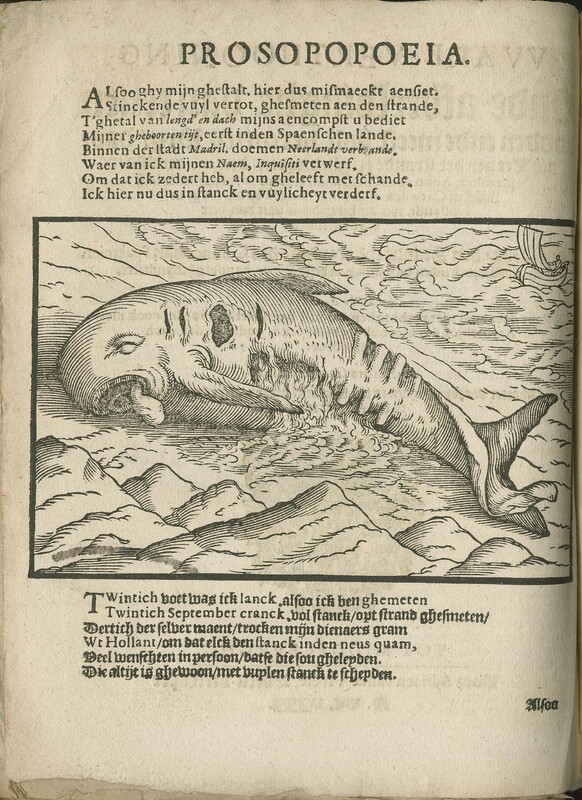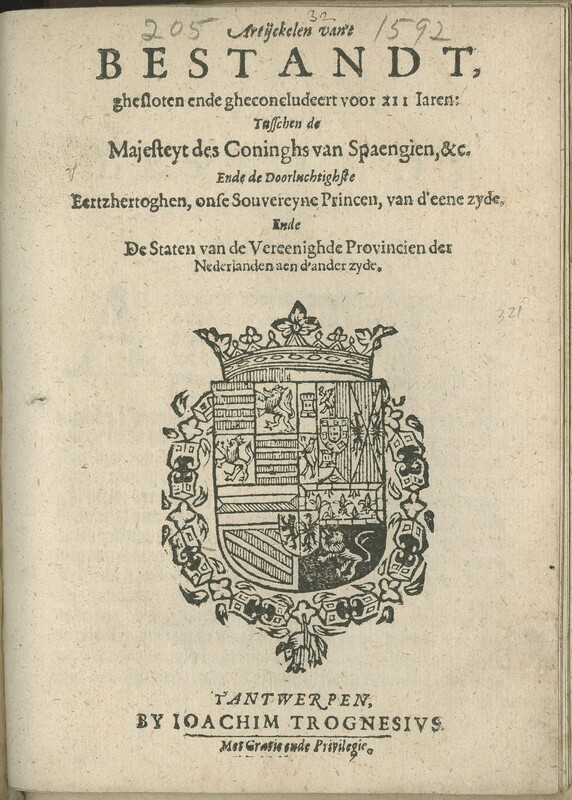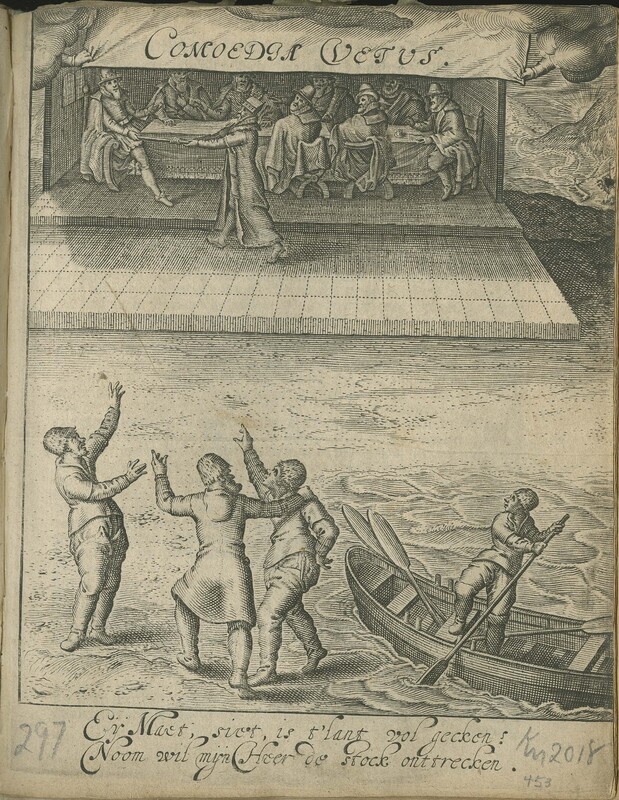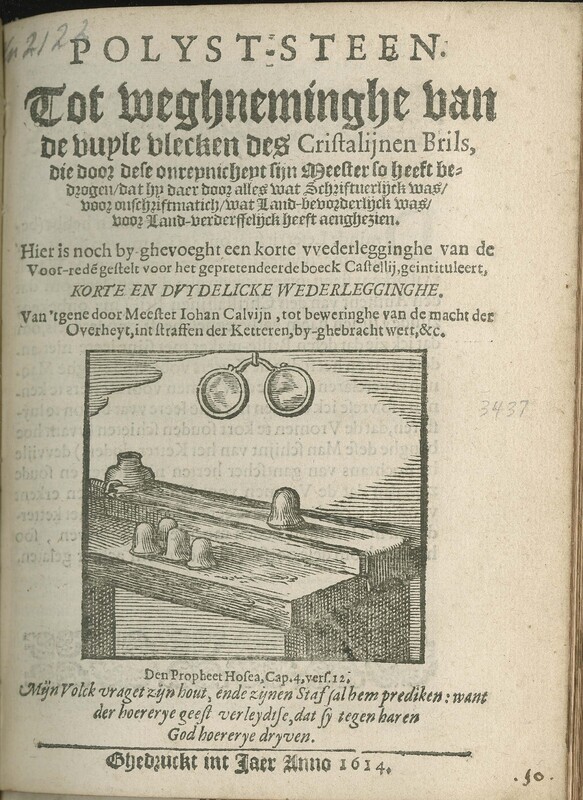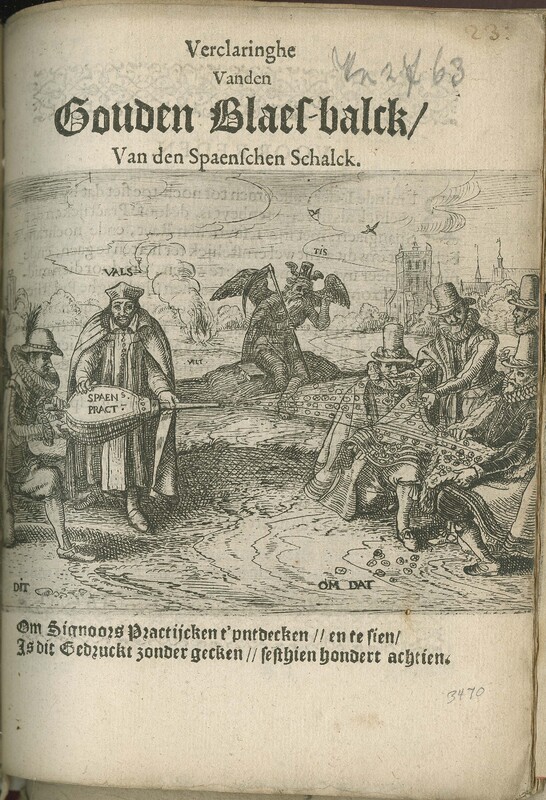Religious Battles during The Twelve Years Truce (1609-1621)
Until 1648, when the United Provinces finally were acknowledged by Spain to be a free and sovereign state at the Peace of Westphalia, the pamphlets describe a people constantly in a state of war. The exception was the 1609-1621 truce between the United Provinces and Spain, which gave the two factions of Dutch Protestants the leisure to engage in rabid religious confrontations with each other: the more liberal Remonstrants and the orthodox Calvinists engaged in a virtual theological war. The Ammianists or followers of Jacobus Ammianus (1560-1609) would receive the name of Remonstrants after they expressed in the Remonstrance of 1610 a strong theological statement to the States General of the Netherlands. Essentially, they aimed to moderate Calvin's doctrine on predestination. This theological war came to a head at the famous Synod of Dort (1618-1619), resulting in the persecution and enforced exile of the Remonstrant leaders. In the Michigan collection, the period of the Twelve-Year Truce is represented by more than 600 pamphlets, with nearly 150 published in the year 1618 alone.
The title page refers to the terrifying depiction of a dead half-rotten whale thrown on the beach by the sea on September 20, 1608. Above is a woodcut depicting the dead whale. Overall, the content of the pamphlet is a playful allegory identifying this dead whale, its stinking carcass, with the rotten Spanish policies during the peace negotiations with the Netherlands.
The wording of the title page describes the content of this pamphlet: the articles of the Twelve Years Truce between the sovereigns of the Southern (Spanish) Netherlands (Albert and Isabella) in the name of Philip III of Spain, and the States General of the seven United Provinces of the Netherlands. Below the title is a woodcut representing the coat of arms of Spain. The upper section, from left to right, depicts the Crowns of Castile and Leon, and Aragon and Aragon-Sicily side by side; it includes the escutcheon of Portugal acknowledging the unification of Spain with Portugal in 1580. The lower section, from left to right, represents Austria, Burgundy ancient, Burgundy modern, and Brabant, with an escutcheon depicting Flanders and Tyrol divided by a vertical line. The arms are topped with a royal crown and surrounded by the collar of the Order of the Golden Fleece.
The title page consists of a copperplate engraving depicting a theatrical stage: on each side of the stage is a hand that, appearing from a cloud, draws, or withdraws, a curtain labeled with the Latin words, "Comoedia vetus" ("Old Comedy"), a reference to the old tradition of Greek comedy designed to satirize public persons and affairs. In this stage, a group of men is sitting at a council table. One of them is easily recognizable as the Stadholder Maurice, Prince of Orange, who holds a staff that another man, who wears a hat shaped like a miniature church, is trying to grab from him. Below are four boatmen, probably representing the common people, who show their amazement at their behavior. The engraved caption says: "Ey Maet, siet, is t'lant vol gecken? /Noom wil mijn Heer de stock onttrecken." In English: "Eh, mate, look, is the country full of madmen?/ The big shots want to take away the Prince's staff."
The main point of this pamphlet is that the common man thought the perpetual conflicts between the Remonstrant and Contra-Remonstrant factions were detrimental to the country: they generally supported the position of Stadholder Maurice, Prince of Orange, who was on the Contra-Remonstrant side.
As the title page explains, this pamphlet records a series of attacks and counter-attacks between the Remonstrant and contra-Remonstrant factions. The title page includes a woodcut depicting a workshop to polish the lenses of spectacles. On the table are polishing stones; a pair of spectacles are on display above. Allegorically, this woodcut suggests that a pair of spectacles are ready to be cleaned of ugly spots by a polishing stone so that the wearer of these polished spectacles will no longer be deceived. The image of precision spectacles, or “eye-salve for the blind,” was used over and over by pamphleteers arguing their own particular points of view.
The title page can be translated as follows: "Explanation of the golden bellows of the Spanish rogue." Below, the engraving represents a Spaniard who, helped by a Jesuit labeled with the word "vals" (perfidious), uses bellows, labeled as "Spaens pract" ("Spanish evil practices") to shoot gold coins that are to be caught in a cloth held by the main target of this pamphlet, Johan van Oldenbarneveld, and three others. In the background is an allegorical personification of Father Time, a winged, and horned, old man crowned with a sand clock and holding a scythe; he observes the pathetic scene with a telescope. The English translation of the caption is: In order to uncover and see Signore's evil practices, this is printed in sober earnest in the year 1618.
The pamphlet is an attack on Johan van Oldenbarnevelt (1547-1619), a central figure in Dutch politics and a proponent of religious toleration. He was executed in 1619, with the complicity of Maurits, Prince of Orange.
The title page includes an engraving that shows the assembly hall in the city of Dordrecht (historically known in English as Dordt) where the Dutch Reformed Church held an international Synod in 1618-1619. The meeting was called to resolve the divisive theological controversy caused by Arminianism, the followers of the Remonstrant brunch of the Dutch Reform Church. On the engraving, the letters identify the seats assigned to the various representatives of the Synod. In brief, the Synod rejected the teaching of the Remonstrants as falling outside the bounds of the Reformed creed.
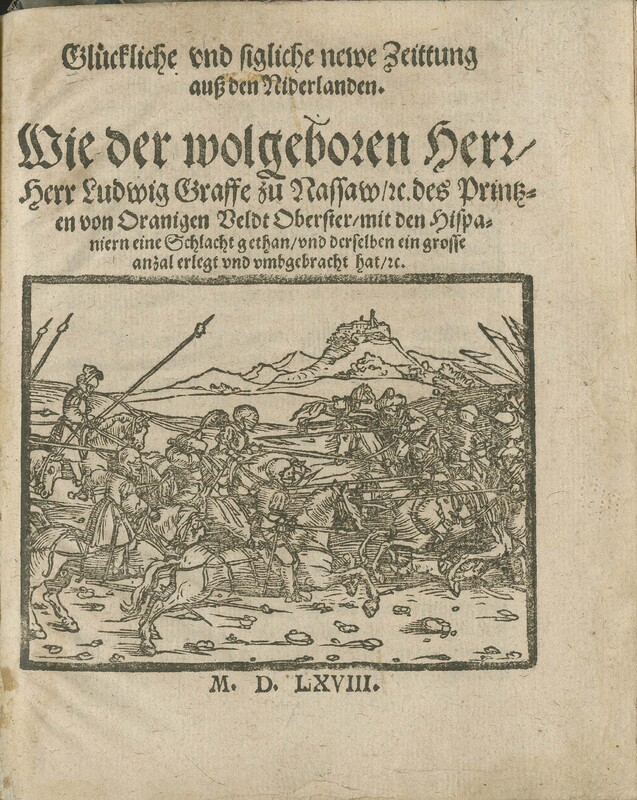
The Revolt against the Spanish Rulers (1556-1648): Battles, Sieges, and Treaties
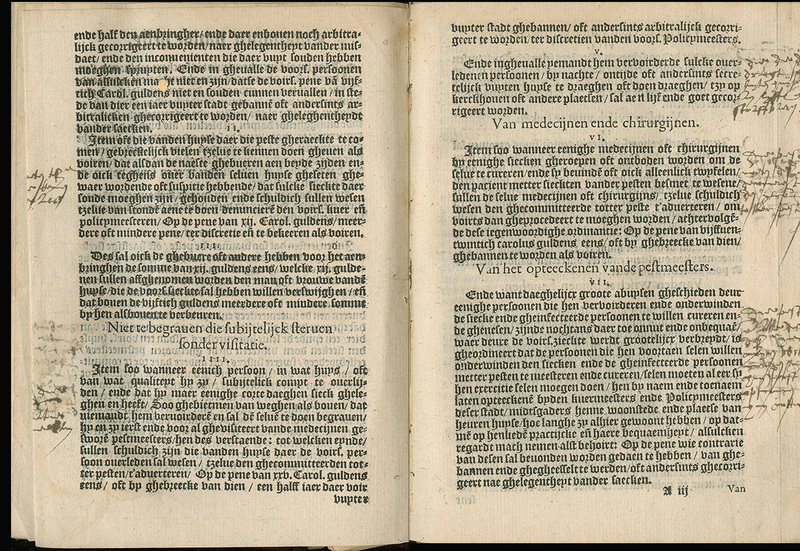
Internal Affairs

